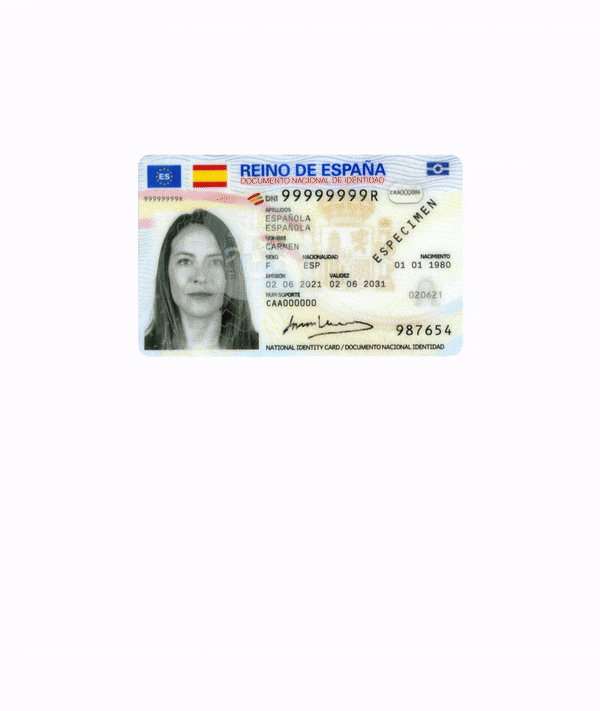NFC Verification
NFC-based authentication lets you verify identity documents by reading the secure chip embedded in modern passports and IDs using a mobile phone's NFC capabilities. This provides the highest level of security available for ID Verification.

Key Benefits
- Highest Security Available: Verifies cryptographic signatures directly from government issuers
- Easy to Use: Works automatically with any NFC-enabled phone
- Tamper-Proof: Detects document manipulation that might not be visible to the human eye
- Comprehensive Data: Extracts additional data not available through OCR alone
- Flexible: Falls back to standard verification if NFC isn't available
How It Works
This section outlines the process of verifying identity documents using NFC technology and secure data extraction methods.
Session Initiation
- The user initiates the verification process via your platform or app.
- They scan a QR code or click a link to open the Didit App.
- If using a non-compatible mobile device, the user proceeds with the web-based verification process.
Document Photo Capture
- The user photographs their ID document using our web interface or mobile app. This step captures the visual data of the document.
NFC Support Detection
- Our system checks if the ID document is an ePassport and if the user's device supports NFC. Many modern documents contain an embedded NFC chip that stores crucial data. For devices without NFC support, this step is automatically skipped, and the user continues with standard documentary verification
NFC Scanning
- For compatible devices and documents, the user is guided to place their document against their NFC-enabled device. This initiates the reading of the NFC chip.
Data Extraction
- The system extracts comprehensive data from the chip embedded in the identity document. This includes reading the Document Security Object (SOD) and various Data Groups (DGs) as per ICAO (International Civil Aviation Organization) standards:
- DG1: Personal Data - Includes first name, last name, ID number, birth date, etc.
- DG2: Facial Image - A high-resolution digital photo of the document holder.
- DG7: Signature - Digital representation of the document holder's signature.
- Additional DGs - May include fingerprints, iris scans, and other biometric data depending on the document's specifications.
Verification and Cross-Validation
- The extracted data is verified through cryptographic methods:
- Digital Signatures: Each document's chip contains digitally signed data. These signatures are verified against certificates issued by the document issuer (e.g., the government).
- Certificate Chain Validation: The chain of trust is established by validating the document's certificates against a trusted root certificate, often maintained in a country's master list or the ICAO Public Key Directory (PKD). This ensures that the document has not been tampered with and is indeed issued by a legitimate authority.
- Certificate Revocation Lists (CRLs): The system checks CRLs to ensure that none of the certificates used in the document have been revoked. This adds an extra layer of security by verifying that the certificates are still valid and have not been compromised.
- Master Lists: Our system checks against ICAO PKD and other trusted sources for updated certificate information, ensuring the highest level of security.
- The extracted data is cross-validated against the information from the document photo to ensure consistency and authenticity. Any discrepancies can flag potential issues.
Result Notification
- The user is promptly notified of the NFC scanning status. Any discrepancies or issues are highlighted for further action.
⚠️
Current Availability Limitations
NFC verification is currently only available through the Didit native app, not via web browsers.
Browser Support Status:
- Android: Chrome has implemented an experimental Web NFC API, but it remains unstable and requires explicit user permissions.
- iOS: Despite NFC hardware support in iPhones, Safari does not support the Web NFC API at all.
Coming Soon: We're developing a native app SDK to enable integration of NFC verification directly into your own applications.